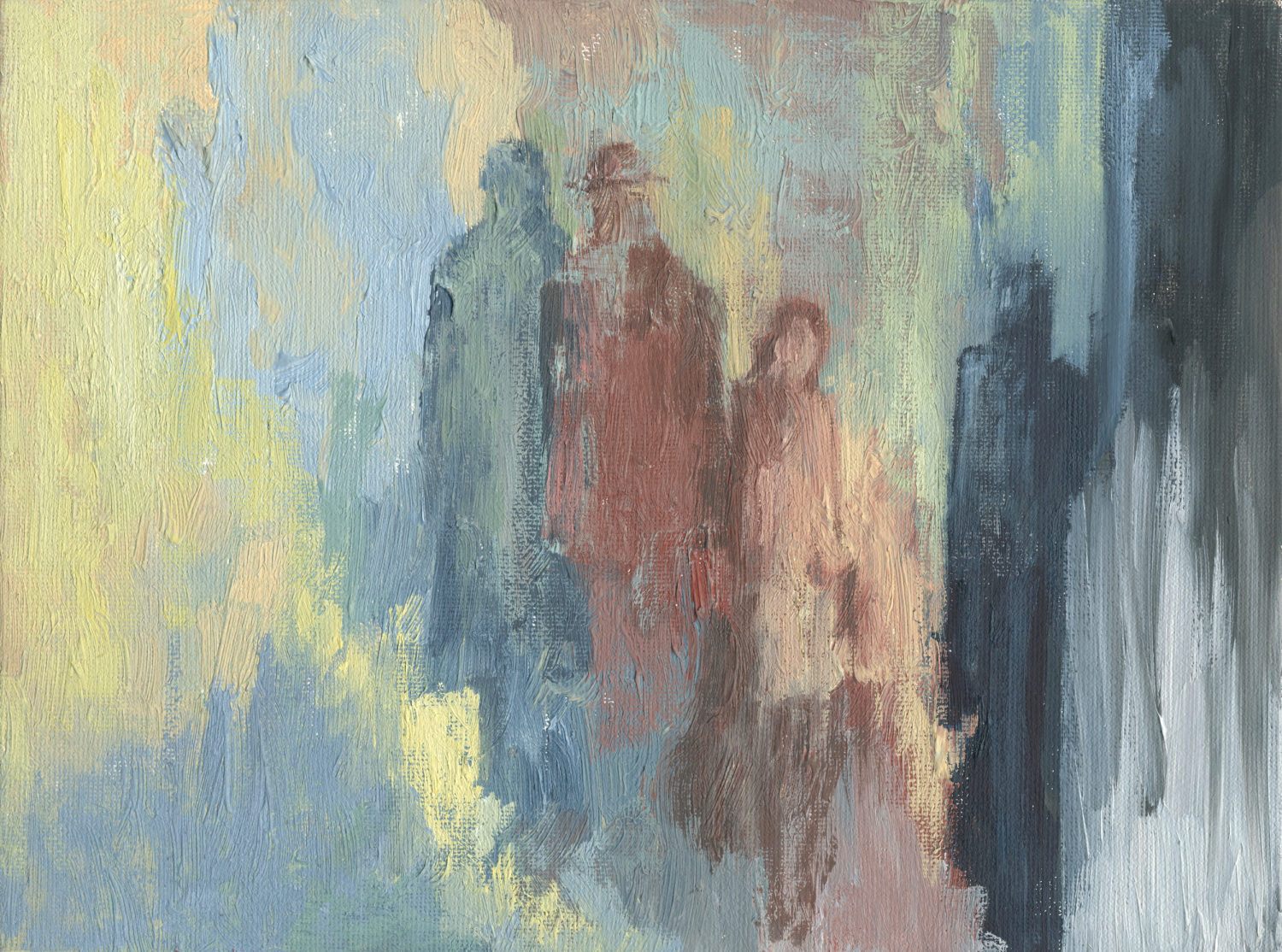This column originally appeared in The Cohort, Poynter’s newsletter that centers conversations about gender in media. Subscribe here to join the community.
Two weeks ago I was walking to a vigil for the Atlanta shootings with my husband. Three teenage boys approached us on the sidewalk, and as we passed them, one shouted “boo!” in our faces before collapsing into giggles. My husband yelled, “What the hell is wrong with you?” The boy who scared us laughed and said “Sorry, I have ADD.” I screamed back that that wasn’t an excuse. He kept laughing and walked away. I yelled profanities at him. He yelled them back, and then his jokes morphed into sexual threats.
In these situations, my instinct is to fight back, to make myself bigger. I want to turn aggressors’ expectations around and surprise them and make them sorry they messed with me. I once yelled at a man on a crowded subway who was whispering lewd things to me and a friend, literally shamed him into a corner while people backed away and I demanded him to explain why he thought that was an OK thing to do, until we pulled into a stop and he skulked off the car.
I feel powerful when I stand up to harassment. But after I confronted the teenage boys, I only felt scared. Maybe it was the context of the vigil and my increased awareness of violence against Asian American women, but I realized viscerally how much danger I could have put myself in by fighting back. For the rest of the walk I was jumpy; every time I heard steps behind us I looked back expecting to see the boys returning to retaliate. If my husband hadn’t been with me, I would have bailed on the vigil and called a car to drive me the mile home.
I realized that my instinct to stand up for myself could have in fact had the opposite effect. I may have become more visible by defending myself, but I was also more visible as a target who had further provoked my aggressor.
This is a frustrating realization I’ve had throughout my journalism career, too. As a petite Asian American woman, I’ve fought to be taken seriously. I’ve asked colleagues to please not call me “cute” or a “baby,” which, thankfully, they obliged. While at first it seems endearing, it’s obviously infantilizing and makes it difficult for me to be seen as a whole person with expertise and authority in my job. The fact that I’m also perceived as young-looking doesn’t help. It’s not much of an issue in the college town where I live, where I’m often mistaken for an undergraduate, but when I’m working with men my father’s age who see in me their college-aged daughters, it’s hard to get them to take my editorial feedback and opinions seriously.
I came up in traditional, male-dominated newsrooms where I learned these hard lessons about how I’m perceived early, back when I actually was fairly young. I also developed tools for coping with them.
When I sense that someone isn’t actually seeing me, I switch into defensive mode: I lower my speaking voice, my language becomes more direct, and I cut out the filler words that are normally part of my vocabulary because I know this type of person often sees them as a reason not to take me seriously. I walk into meetings overly prepared with evidence and arguments to make my case five different ways. I try to exude the confidence they don’t expect me to have. I don’t let them interrupt me, and if I am interrupted, I restart my sentence with, “As I was saying …”
I learned to be tough, and this toughness has gotten me in trouble. I’ve received feedback that my bedside manner should be softer, that I should take things said to me less personally, but also that I should be more authoritative in how I speak. This tone-policing represents an impossible mandate that many people of color — especially Black women — must learn to navigate if they’re going to succeed in traditional workplace environments, and it’s one of the many reasons BIPOC employees don’t stay in their journalism jobs. Unfortunately, I found the contradictions to be too frustrating to keep going, which is part of the reason I’m now self-employed.
A few days after the confrontation with the teenage boys, I watched the new Pixar film, “Turning Red.” At the climax of the movie (spoiler alert), the protagonist’s mother Ming unleashes her long-hidden red panda and expresses her withheld anger toward her daughter, Meilin. Where Meilin’s panda is cute and fluffy and only a bit bigger than a grown adult, Ming’s panda is giant and terrifying with glowing red eyes, and she stomps through the city like a monster from an action film. Her growling voice booms through the city and is loud enough to disrupt a pop concert with thousands of screaming fans.
Interpretations of what the red panda represents range from the raging uncontrollable experiences of puberty to the powerful violence of repressed feelings, especially among immigrant communities. But when I watched Ming finally lose control, tears running down her cheeks and hairs falling loose of her perfectly-pinned twist, I thought of the way I felt yelling back at my harassers, and the way I felt standing up for myself in work meetings when I was disrespected. Sometimes I wonder what it would be like to be perceived as terrifying. I wonder if I would be taken more seriously.
“Turning Red” ends with Meilin guiding Ming back to herself and trapping Ming’s red panda inside a Tamagotchi. Meilin keeps her red panda, but Ming lives on with hers locked away. Meilin uses her cute red panda to raise money to repair the damage Ming did to the concert venue she destroyed in her rage.
Ming’s red panda couldn’t serve her the way it could Meilin; it was big and scary, not cute and nonthreatening. I realized that, like Ming, making myself bigger is only so useful before it becomes a liability. The structures I must navigate stay the same, and I consider locking away my ferocity. I wonder what the way forward is when the thing I want so badly to do — to fight for myself — is also the thing that puts me in the greatest danger.







